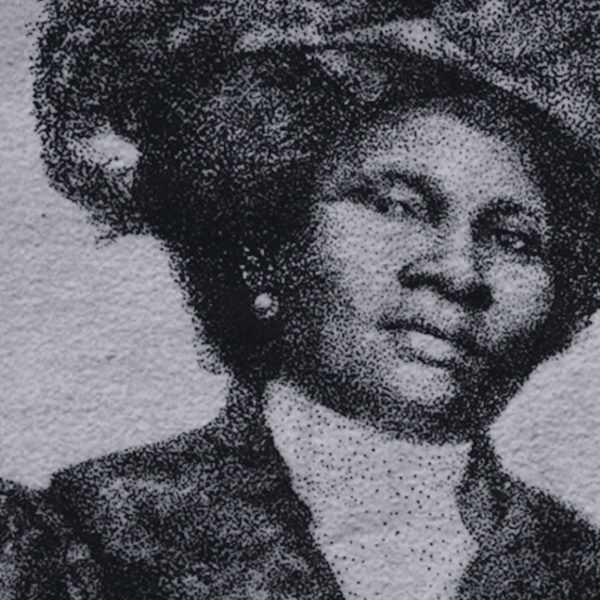John H. Johnson: Changing Publishing – and History


John H. Johnson and the Chicago-based Johnson Publishing Company did more than publish the country’s two most successful and influential African-American-oriented magazines.


Weekly Jet and monthly Ebony – mixes of news, social commentary, culture, entertainment, lifestyle, and fashion – gave African Americans a level of representation and an image of themselves denied them in mainstream media. While the magazines were intentionally aspirational and inspirational as well as informative, they ultimately proved to be strong voices in the Civil Rights movement and demonstrated the importance of the African-American consumer market.
Johnson’s success would propel him to such heights as being the first African American to appear on the Fortune 400; receiving numerous honorary degrees, including one from Harvard; winning awards from various organizations, such the NAACP, the U.S. Chamber of Commerce, and the Horatio Alger Association; inclusion in the Arkansas Business Hall of Fame and the Chicago Literary Hall of Fame; and being given the Presidential Medal of Freedom.
Yet such achievements hardly seemed to be the destiny of the young Johnson. The grandson of slaves, Johnson was born in 1918 in Arkansas City, Arkansas. Educational opportunities were severely limited in rural Arkansas; there was no public high school open to African-American students in Desha County, where he, his mother, and step-father lived. Rather than not go to school after finishing grammar school, Johnson repeated eighth grade to satisfy his thirst for learning.
Culture Shock
In 1933, at the height of the Great Depression, his family moved to Chicago in search of work for the adults and further education for John. Despite the cultural dissonance he experienced in a large city, where for the first time Johnson saw the African-American middle class, and the unanticipated lack of job opportunities, he thrived in Chicago. He graduated from DeSalle High School (classmates included Redd Foxx and Nat King Cole), where he served as editor of the school paper and the yearbook, and as student council president.
A scholarship for free tuition to the University of Chicago presented both an opportunity and a dilemma: He had no way to pay for the other expenses associated with attending college. Harry Pace, a prominent local African-American entrepreneur and businessman, offered Johnson a job after hearing the young man speak at an Urban League dinner, enabling him to take advantage of the scholarship to the University of Chicago.
The relationship with Pace, who was President of the Supreme Life Insurance Co., would prove to be hugely influential in shaping Johnson’s life. Pace himself stood out among African-American businessmen of his day. He had been the first African American to own a record label with wide distribution, and after his Black Swan Phonograph Company went bankrupt and was sold to Paramount Records, Pace focused on printing, insurance, and eventually the law. Just as Johnson would later create opportunities for African-American writers, editors, photographers, and models with his magazines, Pace helped pave the way for numerous African-American musicians to get hired by other labels, thanks to the work they had done on Black Swan.
In entering the insurance market, Pace recognized that the migration of African Americans from the South to such cities as Chicago and Newark (where he started the firm that would eventually become the Supreme Insurance Company) represented a strong business opportunity. Although many African Americans still lived in poverty or barely above it, life insurance was considered a priority if not a necessity among many factions of the African-American community. The strength of this market and Pace’s ability to tap into it made his insurance business one of the most successful African-American-owned businesses in the North.
A Mentor and More
Pace was more than a benefactor to Johnson; he was a role model and mentor. It was while working for Pace that Johnson had his first foray into publishing. As a clerk at Supreme, one of his jobs was collating articles of interest to the company’s clientele. Johnson believed there was a larger audience eager for such material and decided to publish a magazine. No one shared his vision he couldn’t find anyone to partner with him. However, his mother’s faith in Johnson led her to offer her furniture as collateral for a loan and in 1942, he formed the Johnson Publishing Company. Its first publication was the Negro Digest, modeled after Reader’s Digest in its content and size.
After some initial distribution problems, the Negro Digest was an unqualified success. In 1945, Johnson founded the groundbreaking monthly magazine Ebony, geared to the middle-class African American to whom Johnson was first exposed in Chicago. Like the Negro Digest, it was modeled on a mainstream publication; the glossy, oversized weekly Life Magazine, published by Time Inc. Ebony was the first African-American-oriented magazine in the country to achieve national circulation.
In its debut issue, the editors laid out a mission that understated the impact and influence that the magazine would have: “We like to look at the zesty side of life. Sure, you can get all hot and bothered about the race question (and don’t think we don’t), but not enough is said about all the swell things we Negroes can do and will accomplish. Ebony will try to mirror the happier side of Negro life – the positive, everyday achievements from Harlem to Hollywood. But when we talk about race as the No. 1 problem of America, we’ll talk turkey.”
Johnson kept true to his vow to talk about race honestly in Ebony. As the years progressed, Ebony covered the Civil Rights and Black Power Movements, and increasingly focused on politics and current events. As Johnson wrote in his autobiography, Succeeding Against the Odds, “Not only did we report the struggle, but we also became a part of the struggle. We didn’t stand on our credentials.” In its heyday in the ‘80s, Ebony was estimated to reach more than 40% of African-American adults in the U.S. – an astonishing number – with a circulation of about 2.5 million.
However, it was with Jet that Johnson would truly distinguish himself as a voice and force for social change. Jet began publishing in 1951 (the same year the Negro Digest stopped publishing), and like the Digest, it was pocket-sized. From its inception, Jet was more news-oriented than Ebony. Johnson showed great prescience about the media when he wrote in Jet’s first issue: “In the world today everything is moving along at a faster clip. There is more news and far less time to read it.” The name “Jet” had a double meaning: It signified the target audience, and it identified the faster pace of the news cycle that the magazine would reflect.
Defining Moment
Jet was already an established national magazine when in 1955, Mamie Till, mother of murdered 14-year-old Emmett Till, called Johnson and asked that Jet cover her son’s death and funeral, including publishing pictures of Emmett’s maimed and battered body. The Chicago teen had been killed by two white men in Mississippi (who were acquitted of the crime but later confessed and sold their story to Look Magazine; protected from prosecution by double jeopardy) for allegedly flirting with the wife of one of the men.
Johnson struggled with whether he should publish the photos, telling his daughter, Linda Johnson Rice, “‘I was afraid to publish these (photos) at first.’” The publication of the graphic, chilling, photos, Johnson-Rice said, “…was a defining moment for my father, civil rights, Jet, the writers and photographers…” By the ‘80s, Jet was selling a half-million copies a week. At its peak, the magazine was selling close to 900,000 copies.
The archives of Jet and Ebony (to which the Till photos belong) speak to the unique role that the magazines played in chronicling and changing the arc of African-American history. Among the other treasures in the archives is the Pulitzer Prize-winning photo of Coretta Scott King at the funeral of her slain husband, Dr. Martin Luther King (taken by a Jet photographer). The archives were considered so valuable and of such social and historical import that they were sold separately from the other assets of the Johnson Publishing Company. A consortium of foundations purchased the archives in 2019 with the stipulation that the contents be made available for free.
By the time Jet and Ebony had achieved their circulation milestones, marketers were more than aware of the power of Johnson and his magazines. Starting in the ‘70s, ads were created specifically for Ebony, featuring African-American models. (A young Cicely Tyson had been discovered as an Ebony model.) As NBC News noted: “Those [circulation] numbers made it clear to advertisers — the biggest source of Johnson’s revenue — that there was a largely ignored black American consumer market. That, in turn, created work for black journalists, as well as ad men and later women able to build campaigns aimed at black consumers.” Eventually, specialty advertising agencies would be created to serve the needs of niche publishers of all kinds; a trend if not started then accelerated by the needs of the Johnson Publishing Company.
Branching Out
While Johnson would publish other magazines, such as Ebony Man and a revived version of the Negro Digest, renamed Black World, he turned to other ventures. He built the iconic Ebony headquarters in Chicago – the first high-rise designed by an African-American architect in downtown – owned cosmetics, hair-care, and book-publishing businesses, purchased several radio stations, and branched out into TV production. Fashion Fair, a traveling fashion show organized by his wife, Eunice, helped raise more than $55 million for African-American causes.
Johnson died in August 2005 and continued to be honored after his death: a stamp was issued with his image; a chair in entrepreneurship was endowed in his name at Howard University; a public charter school in Chicago, Johnson College Prep High School, was opened in honor of John and Eunice, who had predeceased him.
His two flagship titles will be getting a new lease on life thanks to the 2020 purchase of Ebony Media (which eventually housed the two magazines) by former NBA player Junior Bridgeman. “Nothing is ever easy, but this would be, I think, a labor of love,” Bridgeman said of his goal of returning the titles to their former glory. Ebony is set to resume publication online in March 2021, with former CNN and BET executive Michele Ghee as CEO. According to Ghee, Ebony will target the 25 to 54 audience; Jet will target those 18 to 34. And while Bridgeman may view it as a labor of love, there is a strong business case to be made: African Americans make up 13.4% of U.S. consumers, but only are targeted by 1.4% of marketing spend, according to marketing charts, an online resource for marketing professionals.
Ghee and Bridgeman need look no further than to the words of Johnson himself for inspiration: “I refused to give up. I refused to take no for an answer, and I refused to let others take no for an answer.”

